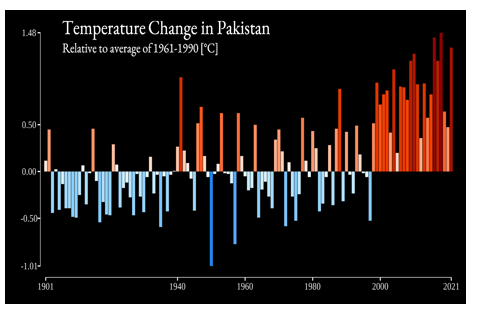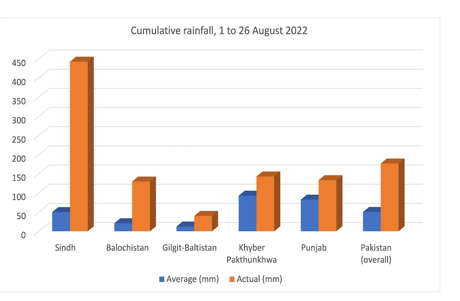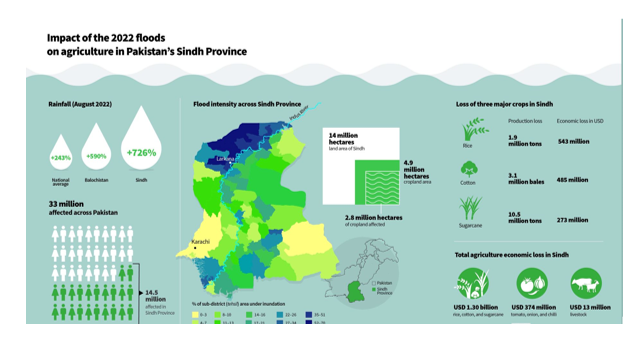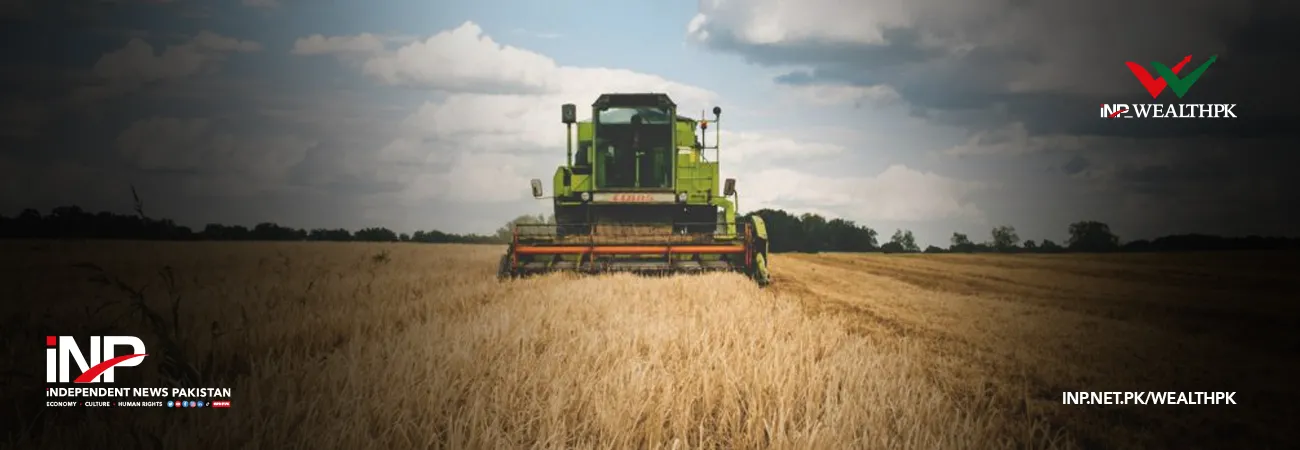INP-WealthPk
Arooj Zulfiqar
Pakistan's agricultural productivity is expected to decrease by 8-10% by 2040 due to climate change. “In Pakistan, the effects of global warming are becoming increasingly evident and pose various challenges to the country's environment, economy, and society,” said Muhammad Arif Goheer, Principal Scientific Officer Pak-NDC Secretariat, Global Change Impact Studies Centre (GCISC), Ministry of Climate Change, while talking to WealthPK. Despite contributing less than 1% of global greenhouse gas emissions, Pakistan is one of the most climate-vulnerable nations on earth.

"Pakistan is experiencing a gradual increase in average temperatures, leading to more frequent and intense heatwaves. Rising temperatures can have adverse effects on public health, agriculture, and overall living conditions, especially for vulnerable populations,” he said. Muhammad Bilal Iqbal, Scientific Officer at National Agricultural Research Centre (NARC), told WealthPK that food security is considered one of the most important factors in developing countries like Pakistan to eradicate poverty. “Global warming, however, is putting a damper on Pakistan's agricultural productivity and is going to cut it by 8-10% by 2040,” he said.
Bilal said that global warming, fuelled by the unabated emission of greenhouse gases, has set into motion a series of climatic shifts that directly impact the agriculture sector. He pointed out that rising temperatures, erratic precipitation patterns, and intensified extreme weather events collectively conspire to unravel the delicate fabric of Pakistan's agricultural tapestry. “The consequences of these climatic changes are far-reaching. Pakistan's predominantly agrarian economy, heavily reliant on crops and livestock, is perilously susceptible to fluctuations in weather patterns,” he said.
According to the Global Hunger Index, Pakistan ranks 92nd out of 116 countries. “We reduced poverty by 50% in 2015, from 57% to 24.3%, but after two catastrophes, the Covid-19 and floods, it has once again increased to 35.7% in 2022.

The floods 2022 had devastating effects on the food security of the country. A prolonged monsoon season and one of the worst floods in the history of Pakistan are the results of climate change. Pakistan’s floods affected more than 30 million people. Floods have caused the most damage in Balochistan, Punjab, and Sindh provinces. Aside from damaging agricultural land, the floods also damaged crops that were ready to harvest in the flood-affected areas. One of the worst-hit crops in Sindh was cotton. In addition to cotton, floods also destroyed the standing crops of onion, rice, sugarcane and chili.

Bilal recommended a thorough, multifaceted strategy to address these looming problems. “Through the cultivation of climate-resilient crops, adoption of sustainable practices, investment in water management, and dissemination of knowledge, Pakistan can navigate the treacherous terrain of global warming,” he said.
Credit: INP-WealthPk













